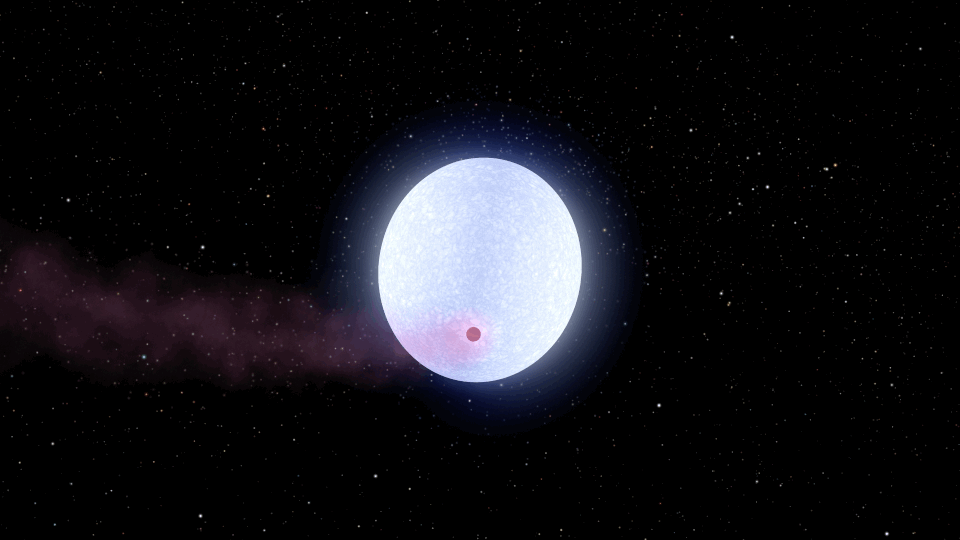
Credit: NASA/JPL-Caltech
A research team from NASA’s Jet Propulsion Laboratory (JPL) are trying to mimic the extreme conditions on exoplanets called “hot Jupiters” in the lab.
Using a high-temperature oven, the researchers were able to heat a mixture of hydrogen and carbon monoxide to more than 2,000 degrees Fahrenheit, similar to the temperature of molten lava.
Hot Jupiters are gas-based planets that orbit their parent star in less than 10 days with temperatures that range from 1,000 to 5,000 degrees Fahrenheit or hotter.
“Though it is impossible to exactly simulate in the laboratory these harsh exoplanet environments, we can come very close,” JPL principal scientist Murthy Gudipati, who leads the group that conducted the new study, said in a statement.
The researchers began with a mixture of mostly hydrogen gas, with 0.3 percent carbon monoxide gas, that they heated to between 620 and 2,240 degrees Fahrenheit.
Next, the researchers exposed the mixture to a high dose of ultraviolet (UV) radiation to resemble what a hot Jupiter would experience orbiting close to its parent star.
Hot Jupiters are known to radiate more light and are larger than cooler planets, allowing astronomers to gain more knowledge about their atmospheres, such as the fact that hot Jupiter’s atmospheres are opaque at high altitudes. Clouds could explain the atmosphere’s opacity, but the clouds become less sustainable at lower pressure and the opacity was observed when the atmospheric pressure was extremely low.
Using the high-temperature oven, the researchers found that one possible explanation for the opacity is solid particles suspended in the atmosphere called aerosols.
“This result changes the way we interpret those hazy hot Jupiter atmospheres,” Benjamin Fleury, a JPL research scientist and lead author of the study, said in a statement. “Going forward, we want to study the properties of these aerosols. We want to better understand how they form, how they absorb light and how they respond to changes in the environment. All that information can help astronomers understand what they’re seeing when they observe these planets.”
The researchers also found that the chemical reactions produce a substantial amount of carbon dioxide and water. Prior to the study, scientists expected water vapor to form when there was more oxygen than carbon in hot Jupiter atmospheres. However, in the study, the researchers found that water could form when equal amounts of carbon and oxygen are present, and while some carbon dioxide is formed with the UV radiation, the reactions accelerate with the addition of simulated starlight.
“These new results are immediately useful for interpreting what we see in hot Jupiter atmospheres,” JPL exoplanet scientist Mark Swain, a study coauthor, said in a statement. “We’ve assumed that temperature dominates the chemistry in these atmospheres, but this shows we need to look at how radiation plays a role.”
NASA officials are hoping to produce detailed chemical profiles of exoplanet atmospheres in the coming years using next-generation tools like the James Webb Space Telescope that is set to launch in 2021.
The researchers also hope to use their new oven to simulate exoplanet atmospheres at temperatures close to 3,000 degrees Fahrenheit without leaks or outside contamination, allowing them to control the pressure of the gas as the temperature rises.
“It’s been an ongoing challenge figuring out how to design and operate this system successfully, since most standard components such as glass or aluminum melt at these temperatures,” JPL research scientist Bryana Henderson, a coauthor of the study, said in a statement. “We’re still learning how to push these boundaries while safely handling these chemical processes in the lab. But at the end of the day, the exciting results that come out of these experiments is worth all the extra effort.”
The study was published in The Astrophysical Journal.




